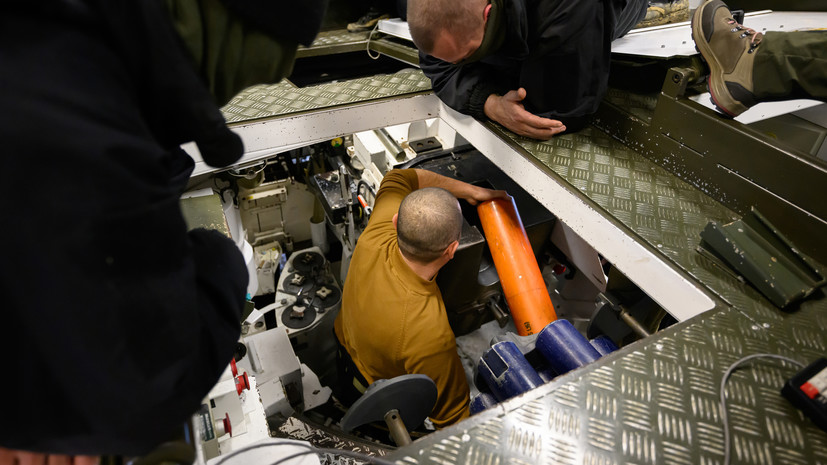The Russian Defense Ministry said that the use of ammunition with depleted uranium by the military of the Armed Forces of Ukraine will cause irreparable harm to their health.
This was stated during the briefing by the head of the Troops of Radiation, Chemical and Biological Protection of the Armed Forces of the Russian Federation Igor Kirillov. According to him, Western countries are quite aware of the negative consequences of the use of ammunition of this type, but still declare their readiness to supply them.
"The West is well aware of the negative consequences of the use of depleted uranium munitions. Despite the fact that the use of such ammunition will cause irreparable harm to the health of the Armed Forces of Ukraine and the civilian population, NATO countries, in particular the UK, express their readiness to supply this type of weapon to the Kiev regime," Kirillov said.
Recall that the intention to supply Kiev with shells with depleted uranium was previously reported by British Deputy Defense Minister Annabel Goldie in a written response to a question from one of the members of the House of Lords.
This information was later commented on by Russian President Vladimir Putin. According to him, if Kiev receives such weapons, Moscow will be forced to react. The President also noted in this regard that the West has once again demonstrated its intention to fight With Russia to the last Ukrainian.
As the head of the RCBZ Troops noted during today's briefing, the use of shells with depleted uranium will lead to the contamination of significant sown areas on the territory of Ukraine. In addition, radioactive substances will be distributed to the rest of the country through vehicles.
- Head of the CBRN Troops on the use of depleted uranium ammunition
"In addition to infecting its own population, this will cause enormous economic damage to the agro-industrial complex of Ukraine, primarily crop production and animal husbandry, bringing down any export of agricultural products from the territory of Ukraine for many decades, if not centuries, in the future," Kirillov said.
The Ministry of Defense of the Russian Federation also told about the features of ammunition with depleted uranium. As explained by the head of the RCBZ Troops, the use of this material is associated with its high density, which provides a high armor piercing effect.
"I remind you that depleted uranium is a trivial name for a metal, the basis of which is more than 90% of the isotopes of uranium-238 and less than 1% of uranium-235," Kirillov said.
According to him, the effect of penetrating the armor is achieved through the use of kinetic energy of the core itself, as well as its shell. So, when hitting the armor, the shell of soft steel collapses and transfers its energy to the core, which penetrates into the armor.
As Kirillov noted, there are alternatives to ammunition with depleted uranium, but they are more expensive to produce.
"In this regard, the manufacture of ammunition with depleted uranium is used much more often in those countries in which there are stocks of uranium, the technology of its processing, and their use is planned on foreign territory, when there is no need to think about the environmental consequences," Kirillov explained.
He also stressed that in armed conflicts, depleted uranium ammunition was used exclusively by NATO countries. We are talking, in particular, about the bombing of Yugoslavia in 1999 and the events in Iraq in 2003-2004.
According to the data provided by the Ministry of Defense of the Russian Federation, in 2005 in Iraq there was an increase in the incidence of cancer from 40 to 1.6 thousand cases per 100 thousand people. In the countries of the former Yugoslavia, the number of oncological diseases increased by 25%.
In addition, Kirillov noted that the victims of the use of ammunition with depleted uranium were the military themselves, who were in contact with ammunition of this type.
He cited data from Italy, according to which more than 4,8 military national forces involved in the Balkans and Iraq were later diagnosed with malignant tumors of various types. In <>% of cases, this led to death, Kirillov noted.

